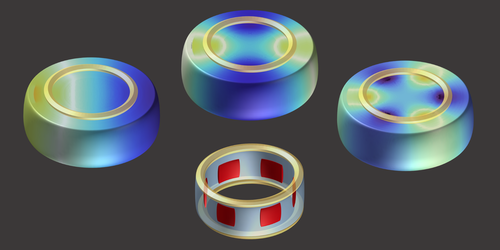• Physics 17, s34
The proposed ring-shaped device could potentially measure glucose levels in a person’s blood with enough precision to be clinically useful.
H. Kwon/Advanced Metamaterials Center
Continuous and accurate monitoring of glucose levels in the bloodstream is critical to effectively managing health conditions such as diabetes. Directly measuring blood sugar levels is invasive and requires puncturing the skin to collect a blood sample. Non-invasive alternatives exist, but they only measure blood sugar levels indirectly, for example using tears or sweat, resulting in delayed and less accurate results. Now, Hoyoung Kwon of South Korea’s Center for Advanced Metamaterials and Andrea Aru of the City University of New York have proposed a ring-shaped device that can measure blood sugar levels with enough precision to directly measure blood sugar levels non-invasively. .clinically useful [1]. This advancement adds to the functionality of existing Ring devices, which can currently measure health parameters such as blood pressure and heart rate.
Kwon and Al’s ring device is designed to be worn on the finger and transmits high-frequency electromagnetic waves through the skin. The ring contains a detector along with an amplifier that increases the field strength. Numerical simulations of the field after passing through the finger revealed significant scattering of the field over a narrow range of frequencies. The frequency of peak intensity (resonance) of this scattering band correlates with the glucose concentration in the blood.
The results show that this resonant frequency is linearly proportional to blood glucose levels at concentrations between 0 and 400 milligrams per deciliter (mg/dL), and that the ring design is sensitive to changes in glucose concentration as small as 10 mg/dL. It shows that there needs to be. Therefore, measuring the resonant frequency provides a high degree of sensitivity. According to the World Health Organization, normal blood sugar levels after fasting, such as before breakfast, are between 70 and 100 mg/dL. The device therefore has the potential to provide meaningful and timely feedback to users, the researchers said.
–Martin Rodriguez Vega
Martin Rodriguez-Vega is the next associate editor. physical review letter.
References
- H. Kwon and A. Alù, “Active Me-like Resonance for Noninvasive Glucose Detection” Physics.Applied revision twenty one034060 (2024).




